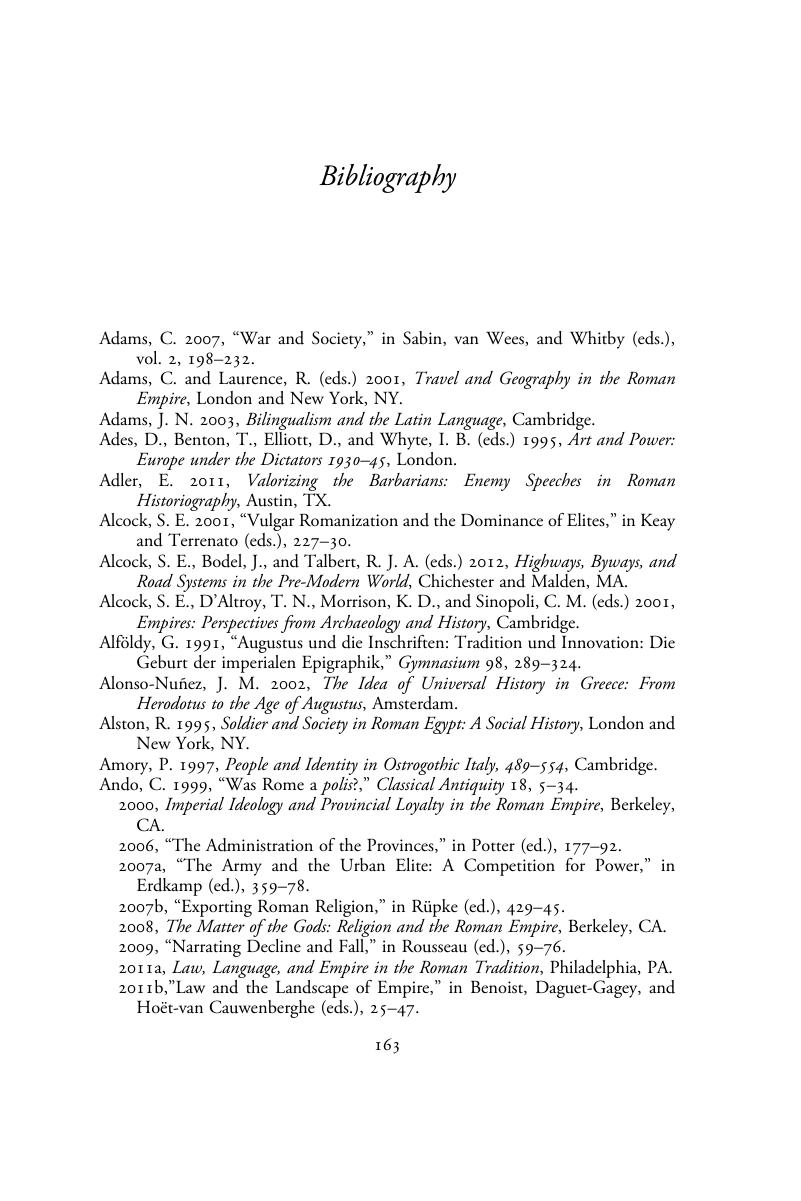Book contents
- Empire and Political Cultures in the Roman World
- Key Themes In Ancient History
- Empire and Political Cultures in the Roman World
- Copyright page
- Contents
- Figures
- Acknowledgments
- Chronology
- Abbreviations
- Additional material
- Introduction
- Chapter 1 Toward a Roman Dialect of Empire
- Chapter 2 Territory
- Chapter 3 Wealth and Society
- Chapter 4 Force and Violence
- Chapter 5 Time
- Epilogue
- Bibliographical Essay
- Bibliography
- Index
- References
Bibliography
Published online by Cambridge University Press: 27 July 2018
- Empire and Political Cultures in the Roman World
- Key Themes In Ancient History
- Empire and Political Cultures in the Roman World
- Copyright page
- Contents
- Figures
- Acknowledgments
- Chronology
- Abbreviations
- Additional material
- Introduction
- Chapter 1 Toward a Roman Dialect of Empire
- Chapter 2 Territory
- Chapter 3 Wealth and Society
- Chapter 4 Force and Violence
- Chapter 5 Time
- Epilogue
- Bibliographical Essay
- Bibliography
- Index
- References
Summary

- Type
- Chapter
- Information
- Empire and Political Cultures in the Roman World , pp. 163 - 198Publisher: Cambridge University PressPrint publication year: 2018

